We thought it was about time that we introduced ourselves properly and with a smile! So far we have been lurking behind the scenes, popping up in the occasional blog post photo most commonly with our frowning ‘problem-solving’ faces on, unaware we were going to feature in a future post! Conserving and preparing approximately 200 textiles and costume for display is certainly challenging but we’ve seen the objects and we are all very excited about this exhibition.
There are ten permanent members of staff working in Textile Conservation at the V&A, making it the largest Conservation Studio at the Museum. In addition, for a large project we often hire extra staff and in the summer we usually host postgraduate conservation students so there will be a big team on hand to help with The Fabric of India. Of course this isn’t the only exhibition that the studio is working on so within the team we allocate lead conservators to each project to manage the work and liaise with the exhibition team. For The Fabric of India we have two lead conservators, I work in the main studio at the V&A in South Kensington and my colleague Albertina Cogram is based at the Textile Conservation studio at The Clothworkers’ Centre at Blythe House where the V&A’s textile collections are housed. The third key member of our team is Keira Miller who specialises in the display of costume and may well be known to you already if you have been following the blog for the Wedding Dresses exhibition.
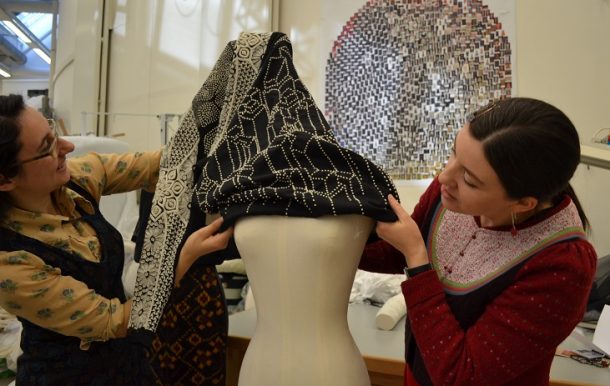
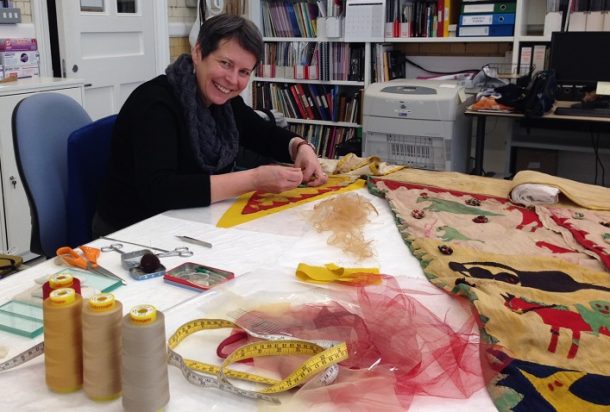
Until recently we have been spending the majority of our time on logistics, carrying out conservation assessments, measuring objects for their mounts and mannequins, working out how many display rollers we need (hundreds) and how many metres of the coloured display fabric discussed in the last blog post we require! These are all vital tasks but as spreadsheets are not that exciting we thought we would spare you from the things that make us frown and wait until we had some more in depth object treatments underway to talk about so look out for future posts from the team. In the meantime I am posting some photos below to give you a flavour of what we have been doing over the past couple of months.
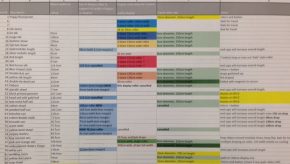
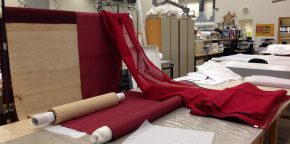
Regular blog readers will know that many of the textiles are currently being photographed for the exhibition book. Every week a new batch of textiles has arrived from the stores at Blythe House to be prepared for photography. Most of the textiles have required humidification to remove creases. The textile is gently humidified to relax the fibres and then eased back to the correct shape and pinned out until it has slowly dried, the process usually takes a whole day. Fortunately at this point most of the textiles do not need to be mounted as they will be displayed, indeed artful draping on the photo studio floor has proved to be the most effective means of getting the textiles to stay still in an interesting pose! Not so for the costumes though, so we are eagerly awaiting the arrival of the Fabric of India mannequins later this month.
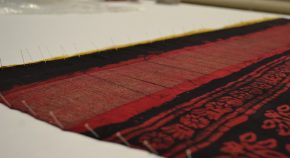
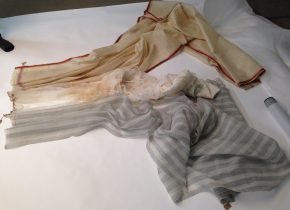
Another publication-related activity is checking exactly what the objects are made from. This week I have been taking some of the metallic textiles over to the Conservation Science Lab where Lucia Burgio has been carrying out non-destructive elemental analysis of them. The results show that the metal strips woven into this golden cloth are actually almost 100% silver with just a tiny layer of gilding on top to give this amazing colour.
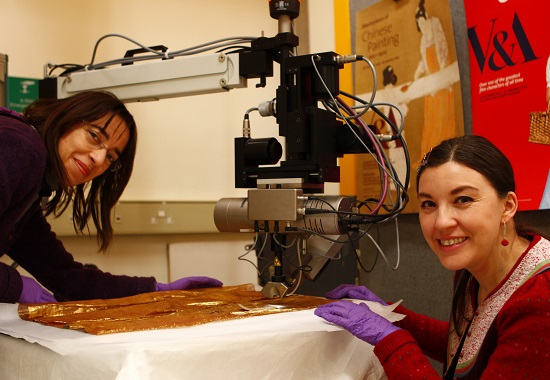
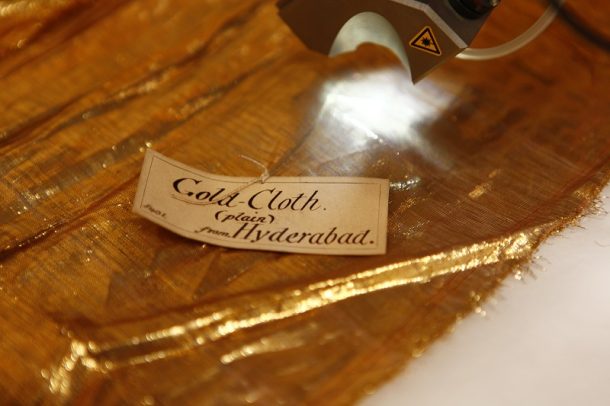
Please check out the Conservation web pages if you would like to learn more about conservation at the V&A and look out for our future posts on the conservation of the textiles for The Fabric of India.
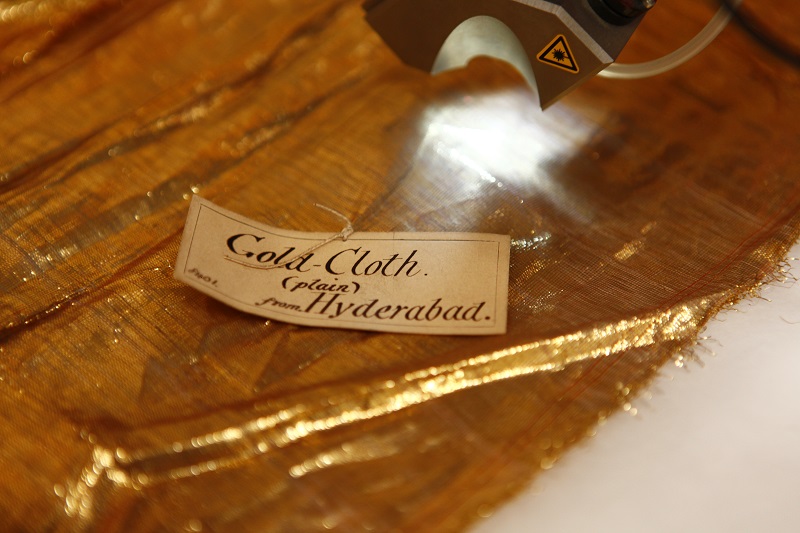
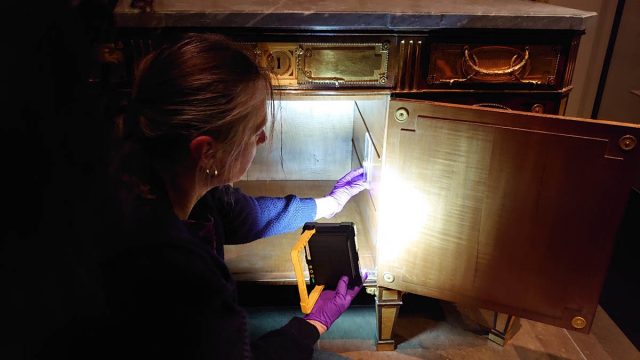
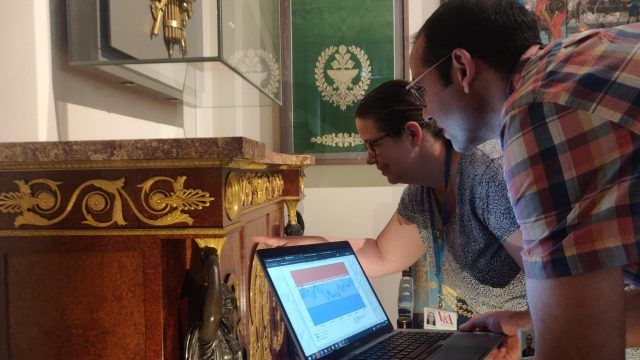
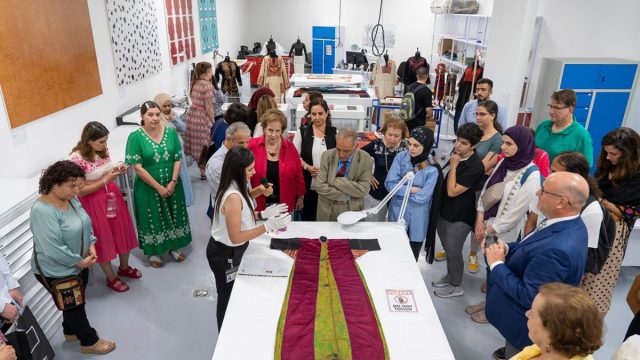
Greetings from the U.S.-
I have three beautiful heirloom gold-threaded woven/embroidered sashes from 19th century India (probably the Bengal – East India Company areas where my Greek ancestors traded). The gold threading has not tarnished one bit. Perhaps the V&A could display them in the upcoming October exhibition.